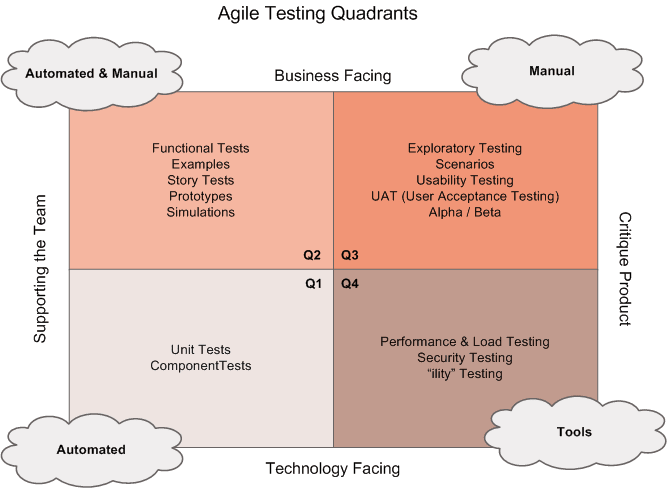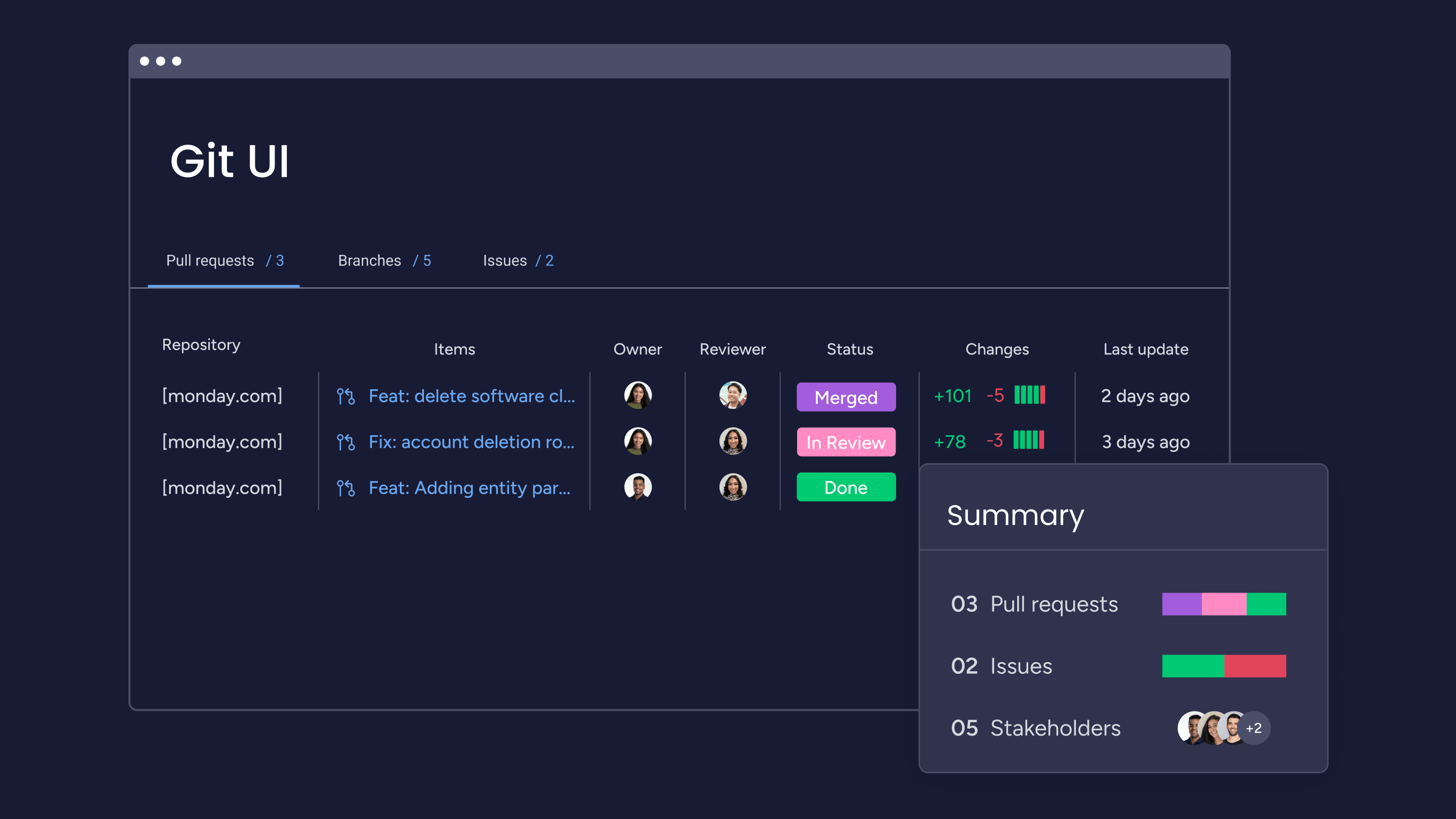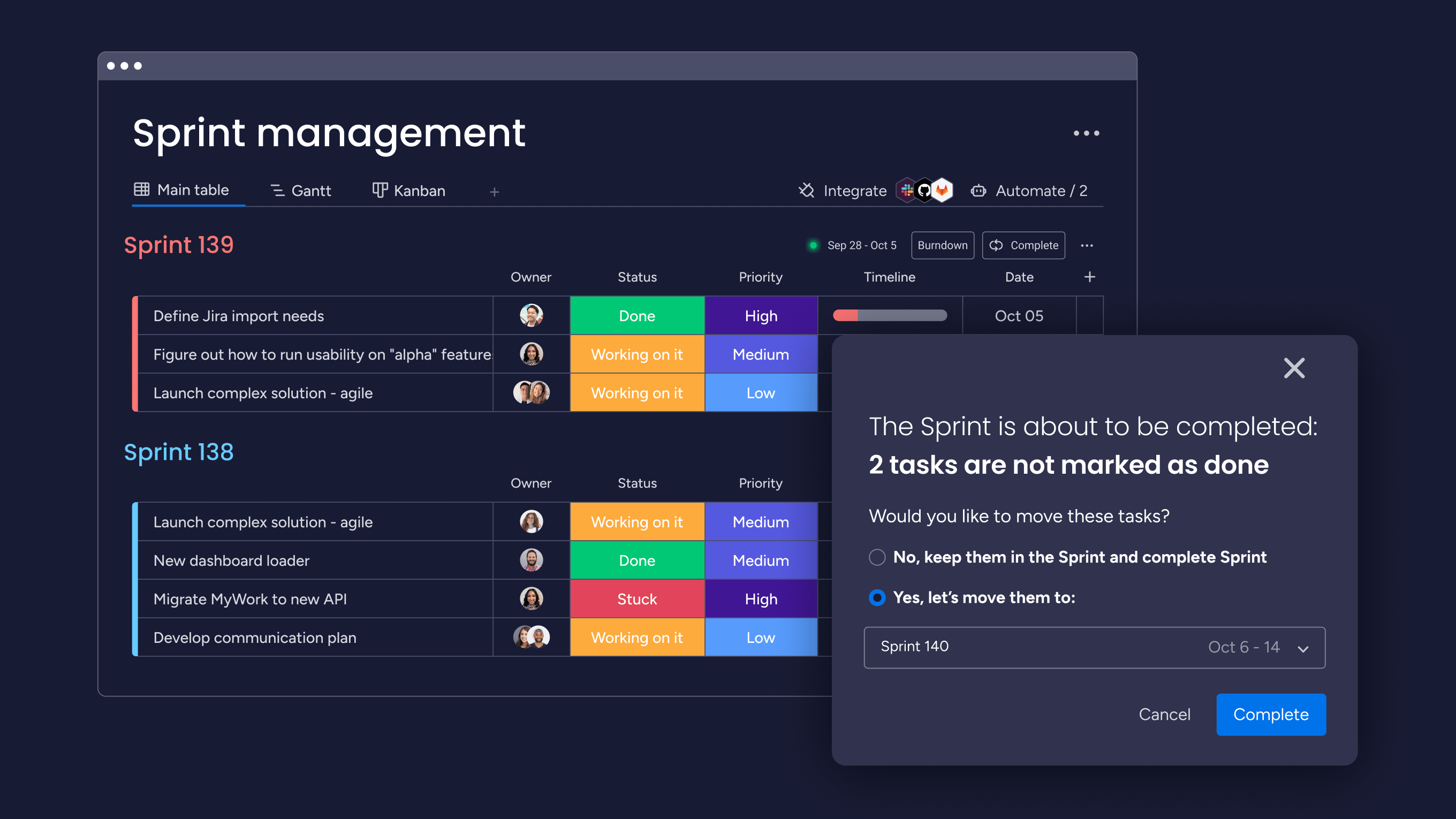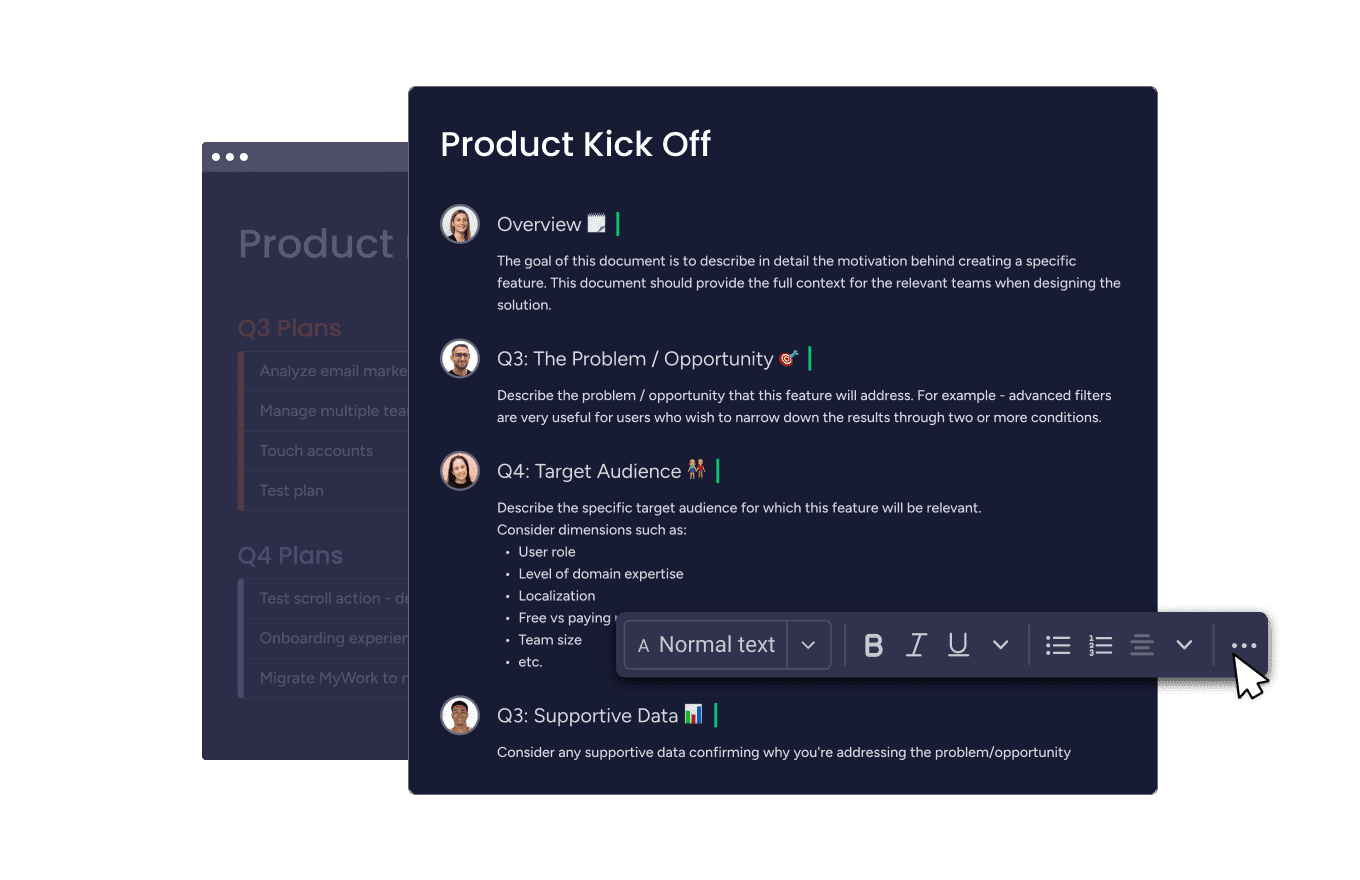In the growing field of software development, developers face the difficult task of creating clean code that effectively brings ideas to life. Entire organizations rely on a development team’s final product, so it’s not unusual for developers to feel that pressure. Imagine your software development team has been working tirelessly to create a new feature for an app, spending time and resources on building this specific code. It’s finally complete, for them to then discover it’s riddled with bugs and the code simply doesn’t work as planned.
This nightmare scenario is all too common for engineering teams who don’t employ Agile testing strategies. Agile testing embraces the characteristics of the Agile methodology — one being continuous improvement — and therefore forces teams to continuously test code throughout the entire development process so there are no unwelcome surprises at the end.
In this blog, we’ll define exactly what Agile testing is, its key characteristics and types, its benefits, and how it differs from traditional development testing. We’ll also introduce monday dev as a tool to streamline your Agile testing processes in the same place where you can manage your entire Agile project’s lifecycle.
Try monday devWhat is Agile testing?
Agile testing refers to the unique way of testing software in teams using Agile methodology. This testing method differs from traditional Waterfall testing, where testing is a distinct step once development is completed. In Agile testing, testing is incorporated throughout each continuous step of the developmental process.
This process is known as continuous testing — essentially, a product is being tested at the same time it’s being created.
This method assures higher product quality as bugs and issues are spotted early in the development process.
8 Key Agile testing principles
Agile testing is an element of the Agile methodology, so its characteristics are the same as any Agile development process. The Agile Manifesto, which is the primary document the methodology is based on, lists the 12 guiding principles of Agile. We’ll examine some of these governing Agile principles to break down how they can be applied specifically to Agile testing.
1. Continuous, early testing
The Agile Manifesto states, “Our highest priority is to satisfy the customer through early and continuous delivery of valuable software,” emphasizing the importance of continuous integration throughout a product’s entire developmental process, especially during its early phases.
2. Incorporation of feedback
One of the reasons the Agile methodology so adamantly supports continuous testing is because this ensures testers receive actionable feedback as soon as possible. Regular feedback during the testing stages is crucial for stakeholders to fully grasp what’s working and what isn’t and relay it to the software developers. By receiving feedback for tests in early iterations, developers can promptly incorporate this feedback to produce better quality early on in the lifecycle of a project.
3. Flexibility
Another principle in the Agile manifesto encourages teams to “Welcome changing requirements, even late in development. Agile processes harness change for the customer’s competitive advantage.” This reflects the importance of adaptation in the agile testing process, which includes a willingness to make changes after receiving the results of each test — even if that requires a team to take a significant shift in their approach
4. Frequent, quick testing schedule
Agile teams work in fast-paced sprints, short iterations lasting 2-4 weeks. Testing activities should be incorporated into each sprint iteration to ensure frequent progress.
5. Collaboration between teams
Another fundamental principle of the Agile methodology is that different teams should work together to leverage each other’s knowledge and create the best product. So, while standard Waterfall testing is only the responsibility of the testing teams, Agile testing methodologies reflect a cross-team effort. Various members should be involved in the process, from the development team to the testing team, marketing team, and product owners.
6. Consistent communication
Cross-team collaboration isn’t the only guiding pillar of the Agile methodology that discusses collaboration — consistent, transparent collaboration is also encouraged. Whether you’re collaborating with your specific team or with other departments, open communication about testing and its corresponding results is essential. This way, everybody is aware of a project’s requirements and the status of the testing efforts to see if any other interventions must be made.
7. Self- motivation/ organization
The Agile Manifesto states, “The best architectures, requirements, and designs emerge from self-organizing teams,” which encourages a certain level of autonomy in Agile testing. This piggybacks off the idea of collaboration between teams to motivate anyone to consistently question and make changes to the testing process. While there’s a general structure these Agile teams follow (testing during Scrum iterations), the specific way these tests take place and who is involved in each test can vary based on the team’s discretion.
8. Constant reflection
Agile is all about efficiency, and the true secret to efficiency is monitoring and reflecting on your processes to make improvements. That’s why reflection is one of the guiding pillars of Agile testing and the Agile methodology as a whole. Teams must constantly reflect upon the testing process—such as what worked well and what didn’t—and incorporate these insights to improve each subsequent test.
Benefits of Agile testing
Many of the benefits of Agile testing are ingrained within its defining principles — things like efficiency, continuous feedback, speed and collaboration. But we’ll get into these benefits even more specifically — diving into the impacts they’ll have on each stage of the product lifecycle.
Better quality products
It’s pretty simple: if you test the viability of a product throughout its creation process, it will simply work better than a product that is only tested at the end. By enforcing incremental tests, users can incorporate feedback to improve the product, even incorporating direct customer feedback to create a product that directly responds to audience needs.
A better-aligned team
According to the 17th State of Agile Report 57% of users who employed the Agile methodology reported better alignment with organizational objectives. When a testing process is a cross-collaborational approach between an entire organization, teams can ensure tests accurately reflect the goals and objectives of the organization.
Better adaptability throughout the product development process
The panic that ensues when a bug is found, or a product isn’t working as planned is severely mitigated if a product is being built under the Agile framework. Of course, it’s never fun to find that something isn’t working as planned, but when a product is being continuously tested, there is more room for error and to learn from your mistakes. When running so many tests, you can almost expect something to be wrong and actually reframe the way you look at bugs or code defects.
Instead of looking at them as an obstacle that will slow down your processes and steer you off track, bugs or defects become an opportunity to improve your product.
What are the main types of Agile testing?
After examining the principles and benefits of Agile testing, you may be motivated to revamp your current testing processes and implement these processes derived from Agile methodology. But how exactly does Agile testing work? We know it involves administering tests at each phase of the Agile software development lifecycle (initiation, planning, execution, monitoring, and closure). Still, there are specific types of testing methods and testing approaches that guide teams in implementing this testing framework effectively.
Test-Driven Development (TDD)
In TDD, the foundational approach to much of Agile testing, tests are created before code is written to guide the Agile software development life cycle. Essentially, the tests define the requirements for each feature.
Acceptance Test-Driven Development (ATDD)
This approach elaborates on the classic test-driven development (TDD), but it’s a more collaborative effort that incorporates the customer’s point of view more directly. Under this approach, a team of developers, testers, and stakeholders (representing the customers) unanimously define acceptance parameters for product features based on the customer story. They describe in specific ways a customer will use a product and each of its features to define tests that ensure the code will pass. This way, each test will correspond to customer requirements of the product, ensuring higher customer satisfaction.
Example: A team is creating an app for planning and organizing trips in advance. Developers, testers, and customers come together to describe this app’s user stories (specific features). Let’s say one of the user stories is, “Each time a change to the itinerary is made, every user registered within a trip receives an instant notification so they can be aligned on changes.” This user story would then inform the tests to ensure the code passes this requirement each time. That definition of success for the code can simply be tested through automation.
Behavior-Driven Development (BDD)
Behavior-driven development (BDD) is a collaborative approach similar to ATDD, but adds an extra emphasis on business outcomes rather than just customer expectations. Teams must come together to examine the expected outcomes of a product to define its features through example scenarios. Teams create scenarios following an Given/When/Then formula, and tests are created based on each scenario.
Example: Continuing with the travel planning app example, developers, testers, customer representatives, and business stakeholders will come together to describe passing scenarios that reflect customer expectations and how they connect directly to business outcomes. One of these scenarios for the travel app is “Given there’s an x amount of users registered to a trip when a user makes a change to the travel itinerary, then everyone will receive a notification.” The ideal business outcome of this scenario is that customers can effectively collaborate in real time on trips to ease the trip planning process. Once this is defined, specific tests are created based on this scenario.
Exploratory Testing
As its name suggests, this is a more exploratory approach to testing. It grants teams the freedom to follow their intuition and create tests without a pre-scripted structure. With this approach, the test’s creation and execution occur simultaneously. It allows teams to examine the potential problems and create tests to respond to them while mitigating risk.
Session-Based Testing
In this structured approach to exploratory testing, testers must write a clear goal or mission before creating a test, essentially outlining what they hope to discover.
Example: During the creation of the travel app, the developers decide they want to create a test to examine if users are consistently notified about changes in the travel itinerary. They then create a test that can be applied to multiple scenarios, to ensure the code is written in a way that notifications connected to itinerary changes are always implemented. This test can determine any bugs that stand in the way so they can be fixed.
Agile testing quadrants
Now that you’ve understood the types of tests that exist, the next plausible question under this Agile approach is how to pick which Agile testing method to use.
The Agile quadrant framework, coined by Agile expert Lisa Crispin, is a matrix to help guide Agile development teams to create the most effective agile test plan that fulfills their needs. It answers the when and how of testing by dividing test types into four categories, each with its own quadrant. By assessing your specific needs and project phase, you can use the quadrants to determine which tests you need and how to run them.

1st Quadrant
Type: Automated testing
Purpose: To improve technical code quality
Test types: Unit tests, component tests
2nd Quadrant
Type: Manual and automated testing
Purpose: To ensure the product aligns with business requirements
Test types: Functional tests, story tests, prototypes, simulations
3rd Quadrant
Type: Manual testing
Purpose: To ensure the product customer value, aligning with user needs/ expectations
Test types: Exploratory testing, scenarios, usability testing, UAT (User Acceptance testing) Alpha/Beta testing
4th Quadrant
Type: Tools testing
Purpose: To certify the technical code works to support nonfunctional aspects of the product, such as security and stability
Test types: Performance Testing, Load Testing, Security Testing, “ility” Testing
Common challenges in Agile testing
When used by an experienced team closely following Agile methodology for product development, Agile testing can yield powerful results. But, like anything under the Agile umbrella, there are, of course, specific challenges and pitfalls to look out for with this method.
Tests emphasize quality over quantity
Agile testing inherently supports the implementation of many tests throughout the project’s lifecycle. While continuous testing has many positive impacts, some people can fall into the trap of over-focusing on the quantity of tests, therefore sacrificing test quality. This may lead to unnecessary or unfocused tests that aren’t helping the product development move along more efficiently.
Tests can become too siloed
Agile testing methodologies favor multiple tests throughout, vs. one end-to-end test that checks the a product’s functionality as a whole. Without good inner-team communication and test documentation, there’s a chance that tests become too siloed and that teams will neglect to comprehensively analyze the tests together, causing conflicting product features.
Teams may lack proper Agile training and resources
For Agile testing strategies to be successful, it must be administered as one of many working pieces under the Agile methodology. Successfully adopting an Agile methodology at an organizational-wide level requires a certain amount of training and knowledge. If teams jump into leveraging these testing methods without proper knowledge or connection to other Agile processes, this unique approach to testing can cause more harm than good.
While these challenges seem major, the good news is they can almost entirely be avoided by following the best practices of Agile testing, and using a product development software solution like monday dev to track Agile testing.
Try monday devBest practices for Agile testing
To set your team up for success and avoid common pitfalls/ common mistakes in the Agile testing process, follow these Agile best practices.
Communicate as much as possible
The key to success in all Agile processes is efficient communication and collaboration, and Agile testing is certainly no exception here. Because developers, stakeholders, and all must work together in the testing process, a plan for consistent communication is crucial. Using Agile project management software with built-in collaboration features helps with effective communication, as does including all teams in daily Scrum meetings.
Automate tests whenever you can
One of the great things about Agile testing is that automation can easily be built into your testing processes to save you time. Take advantage of this by employing automation tools whenever possible, and you’ll be able to both expect more accuracy and consistency within your tests and work more efficiently.
Regularly hold retrospectives
Because implementing feedback is a core tenant of Agile testing (and methodology as a whole), teams should consistently reflect on testing processes to implement feedback for more effective code and more efficient processes. Retrospective meetings also support a healthy, collaborative environment between all involved parties.
Leverage product development software to track tests
Now, the best piece of advice we could give you is to leverage a product development tool that allows you to track and document your Agile tests in the same platform that you’re monitoring your entire product development lifecycle. Using the right software with automation ability and features for seamless team communication makes following the first three best practices inherently simple.
Try monday devGain visibility and control over the entire product development cycle with one comprehensive tool: monday dev
monday dev is a flexible platform that connects tech teams, leadership, and client-facing teams in one space to manage all aspects of the product development process. It’s a unified spaced that can document all your tests to act as a centralized repository that anyone, from engineers to testers and stakeholders, can access and collaborate on. Our top features to power Agile products include:
Templates for Agile workflows
Create the perfect workflow with our pre-made templates, including a bug tracking template, roadmap template, sprint management template, release template, and feature request template. The templates are Agile in nature, as they’re fully customizable, ensuring changes can be made to them at any point in the development cycle.

Dashboards to visualize testing insights
Generate your testing insights into various visual dashboards that update in real-time. Bring your testing metrics to life with Gantt charts, Kanban views, Timelines, and more to spot any patterns, roadblocks, and trends in a format that makes sense for you. Our dashboards ensure your metrics are easily digestible and readily available to share with stakeholders.

Automations for issue tracking
monday dev offers 200+ integrations and apps to connect with many popular Agile tools you may already have in your development tech stack. Seamlessly centralize tools like Marker.io, ShakeBug, Jira, GitHub, and GitLab, within monday dev so issues being tracked through them automatically sync to your workflow.

Customizable fields
Choose from 36+ columns, 27+ view types, custom statuses, and filters to tailor your workflow and management tools to your unique Agile process.

Real-time collaboration features & updates
With built-in messaging, real-time updates, comment threads, and designated task assignment columns, monday dev has everything you need to communicate effectively. Collaborate on documentation and share testing status to ensure everyone stays on the same page.

See for yourself how monday dev gives you everything you need to fully adapt to the Agile framework and deliver better products faster.
Try monday devFAQs
What is the Agile testing life cycle?
The Agile testing life cycle integrates testing processes into each different phase of a project’s lifecycle, including planning, execution, monitoring, and closure. This testing occurs in a continuous integration loop, reflecting these phases throughout each individual sprint.
How is Agile testing done?
Agile testing is done by repeatedly testing code at each phase of the product’s developmental cycle. It’s different to typical waterfall testing which is considered a distinct testing phase at the ned of the development process.
What are the most important skills for Agile testers?
The most successful Agile testers have the following skills:
-Strong communication skills so they can collaborate with other teams without problems
-Adaptability so they can make quick changes when necessary
-Advanced coding and technical knowledge to ensure they know what to look out for in tests and how to execute them properly
-Familiarity and experience with the Agile methodology to ensure all of its principles are being met throughout the testing process

